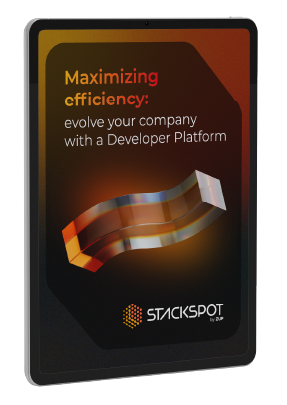At the end of 2023, several US banks were hit by a glitch in the payment processing network, causing delays in settlements for thousands of customers nationwide. While the issue lay with the Automated Clearing House system, and not the banks themselves, banking system failures — in the absence of a Continuous Reliability (CR) framework — are an unfortunate reality of everyday business, with the ensuing erosion of reputation and trust.
The banking and financial services industry, which processes vast amounts of market and consumer data, faces added scrutiny from state and federal regulators, investors, financial markets, and their customers. Hence, a systems outage could result in severe penalties, loss of revenue, and loss of reputation. The risks are multiplied in larger institutions, where changes occur rapidly across multiple locations and chains of command.
Consequently, the need for reliable banking systems has become as critical as ever. Your customers expect robust, reliable, and secure platforms, from mobile banking to online investments. This becomes even more pertinent for established institutions competing with an ever-growing number of challengers vying for business by offering more innovative and flexible products.
In this article, we’ll explore how Continuous Reliability (CR) helps your institution build adaptive banking systems and a more resilient infrastructure that meets the fast-changing requirements of the markets and regulators.
What is Continuous Reliability (CR)?
Continuous Reliability (CR) is a natural evolution of DevOps, an agile methodology that accelerates the software development cycle. In the spirit of DevOps, it removes silos and improves communication between your development, IT operations, quality engineering, and security teams.
Continuous Reliability (CR) provides your institution with an integrated set of tools and practices that enhance your product development (and deployment) for the long term.
The need for adaptive banking systems
Given the nature of their activities, banks have traditionally been cautious regarding upgrades to their core banking systems. While emerging institutions, such as fintechs, have modernized from the get-go, established banks have opted to ring-fence their legacy systems, preferring to focus on upgrading their customer experience.
These legacy systems, built on mainframe technology, were noted for their reliability and stability, having formed the backbone of banking operations for decades through extensive testing and validation. Nonetheless, these systems present challenges in the face of modern demands for adaptability, open data access, and rapid configuration.
One solution has been for banking teams to build their new systems separately, bridging them with their legacy systems, thereby avoiding the need to re-architect their infrastructure. However, the downside is this introduces the potential for new failure points, resulting in degraded infrastructure resilience.
Optimizing processes is a reality
While banks have been cautious about the modernization of their legacy systems, they have been proactive in modernizing their customer experience, providing:
- Digital interfaces, such as online banking platforms and mobile apps.
- Data analytics and artificial intelligence tools to personalize offers, enhance customer engagement, and improve risk assessment.
- Cloud technology applications for non-core banking operations.
These innovations position banks as responsible, forward-thinking players able to navigate the complexities of digital transformation while upholding the highest regulatory compliance and service standards. However, banks must still present a credible strategy for modernizing their core legacy systems.
Exploring Continuous Reliability (CR)
Cloud technology’s benefits of flexibility, agility, and scalability are well known. However, financial institutions trade on trust and reliability and may be concerned about moving to the cloud’s security and resilience implications.
Yet, the accelerating pace of digital banking adoption means institutions must scale rapidly. Continuous Reliability (CR) bridges the gap between application development and post-deployment support, enhancing security, improving procedures, and ensuring regulatory compliance.
As part of your DevOps methodology, you have likely implemented controls as part of your continuous delivery pipelines — especially regarding the separation of critical functions mandated by the regulators.
Continuous Reliability (CR) builds on these pipelines to provide due diligence and monitoring throughout your application development lifecycle, automating workflows and optimizing processes for a more resilient banking infrastructure.
Benefits of Continuous Reliability (CR)
Infrastructure resilience is compromised when Continuous Reliability (CR) gains less prominence. Banks can mitigate their risks through continuous testing and monitoring, which includes:
- Preventing cascading failures through continuous monitoring of fault-tolerant patterns and resilient behaviors.
- Building assurance in critical metrics through validating the presence or absence of detection behaviors and measuring Mean-Time-To-Detect (MTTD) and Mean-Time-To-Recovery (MTTR).
- Ensuring compliance with SLAs and regulatory guidelines through measuring service level resilience scores and uptime metrics, improving capacity planning, and implementing graceful degradation processes.
- Improving the overall understanding of the software architecture through sharing best practices and implementing robust documentation processes.
Consume innovation, begin transformation
Subscribe to our newsletter to stay updated on the latest best practices for leveraging technology to drive business impact
The Importance of Real-Time Monitoring
In its 2021 State of DevOps report, Google reveals that 74% of organizations experience Change Failure Rates exceeding 16%. This means that a significant proportion of software deployments result in a degraded service, with ensuing consequences for the customer experience and revenues. This also means DevOps teams must spend much time on remediation through hotfixes, patches, rollbacks, and more.
Mabl’s 2021 State of Testing in DevOps report further reveals that 70% of organizations need more confidence about the quality of their releases. While Reliability Engineering has become recognized, Continuous Reliability (CR) remains challenging.
Balancing their shifting requirements with the reliability of their software releases remains a challenge for banks. And, with increasing automation and teams of dozens or hundreds of engineers constantly making changes, Continuous Reliability (CR) has become as critical as ever. Integrating CI/CD workflows allows engineers to learn and adapt according to performance in a continuous feedback loop.
Building Reliable Banking Systems
The movement towards agile development and DevOps was founded on turning software development into a continuous engineering workflow. And system reliability, traditionally detached from the delivery process, should be no different.
In traditional software development, incident response wasn’t considered, leaving IT Operations to deal with incidents post-deployment. IT organizations fell short in their reliability strategy without streamlining incident response as part of the formal development process. With limited visibility into application code, ITOps were limited in the effectiveness of their responses.
By considering reliability and incident response during development — from design to deployment — developers can help reduce the complexities of incidents and relieve the pressure on their ITOps colleagues, sharing responsibility for continuous reliability across the entire team.
This entails a culture change, so development teams are trained in reliability concepts and practices. This would ensure reliability standards are integrated into feature development and tied to acceptance criteria.
Enterprise Developer Platforms such as StackSpot EDP provide for reliability monitoring, allowing signals to be incorporated into application functionality natively. This makes it easier to contextualize your incidents, providing your DevOps and ITOps teams with the detail they need to streamline their response to incidents.
Through StackSpot EDP, Continuous Reliability (CR) becomes integral to your application development, helping you identify issues faster, automate workflows, optimize processes, and achieve strategic technology alignment.
Automation and AI: Catalysts for Continuous Reliability (CR)
The banking industry finds itself at a pivotal moment. Technological disruptions and shifting consumer attitudes present an unparalleled opportunity to deliver value at lower cost by engaging with customers in new ways — a new business model McKinsey calls “The AI bank of the future.”
This opportunity for a new business model couldn’t come at a better time. Three-quarters of banks worldwide need help to cover their cost of equity. They’re facing further challenges from fintechs and neobanks leveraging AI for biometrics, loan approvals, and more. Nonbanks also incorporate payment and lending capabilities into their offerings, further disassociating traditional institutions from their customer base.
In this “digital native” environment, consumers have become accustomed to daily transactions through digital channels quickly and flexibly and expect more from their banks.
Therefore, to thrive, banks must become “AI first,” building an AI-powered technology stack that delivers intelligent and personalized experiences at scale.
Building an ‘AI-First’ Bank
AI-powered transformation entails a holistic transformation across banking organizations spanning multiple layers — with McKinsey estimating a potential $1 trillion of value to be unlocked. This should include:
- AI-powered engagement
- AI-powered decision-making
- A core infrastructure
- A platform-based operating model
Banks have struggled to scale their AI deployments despite the billions of dollars spent each year. Although legacy systems have performed well in supporting traditional payments and lending operations, they need more computing flexibility than real-time analysis and closed-loop AI applications require.
This is further hampered by data reserves spread across multiple silos, teams, and departments, thereby restricting analytics efforts to specific use cases. With a centralized data repository, it can generate intelligent, personalized, and timely offers at scale.
This feeds into an operating model where continuous innovation and reliability must be optimized. With banks organized along traditional business lines — where business units define their goals independently — this takes away from a mindset of testing and learning that incorporates feedback loops, experimentation, and iterative improvements.
For the “AI first” bank to become a reality, data must be governed and made available at scale, in real-time, and at the point of decisions. This requires a robust set of tools and processes, such as StackSpot AI Code Assistant, that can be contextualized according to the needs of companies.
Enabling Continuous Reliability (CR) in Banking
Continuous Reliability (CR) must become a central application development tenet for banks wishing to succeed in their digital transformation. It should be treated with the same level of consideration as user experience, application architecture, and security. This helps institutions develop software that meets their customers’ exacting expectations and regulators’ stringent requirements.
Platform engineering tools such as StackSpot Enterprise Developer Platform (EDP), act as a bridge between development and operations, enabling the creation of standardized pipelines which incorporate stages for coding, automated testing, and deployment, vastly reducing the time-to-market, breaking down silos, and accelerating collaboration.
It is now up to your ITOps to solve problems as they arise. StackSpot EDP provides your teams with the tools, frameworks, and infrastructure they need to go from idea to implementation quickly and consistently.
Achieve Continuous Reliability (CR) with StackSpot EDP
While there are many benefits to continuous reliability (CR), it is not without its challenges. It requires a cultural shift towards shared responsibility and collaboration, which can be challenging inside organizations with entrenched silos.
Banks are taking a balanced approach, maintaining their legacy systems while modernizing the customer experience. However, as customer expectations and technology evolve, they must confront the challenge of upgrading their legacy platforms.
The right technology platform can help address security, scalability, and agility concerns. It can help automate repetitive tasks, providing long-term value and ultimately benefiting reliability and service deployment. By emphasizing reliability, you can ensure your teams prioritize it throughout the development lifecycle, building software that’s easier to support and can meet the aggressive service level objectives that keep your products competitive.
Give StackSpot a try
As software engineers with extensive experience in financial services, we understand your need for streamlined and standardized solutions that let your team focus on business goals rather than piecing together the required infrastructure. We value your time and the importance of efficiency. Therefore, we have created StackSpot, our Enterprise Developer Platform, specially tailored for banking professionals like you.
Why not try StackSpot EDP, tailored to your institution’s needs and challenges? Our platform aims to streamline the application of best practices, saving you time and increasing your team’s efficiency. Schedule a demo today! We’re excited to understand your challenges and collaborate on transforming your software development with StackSpot.












